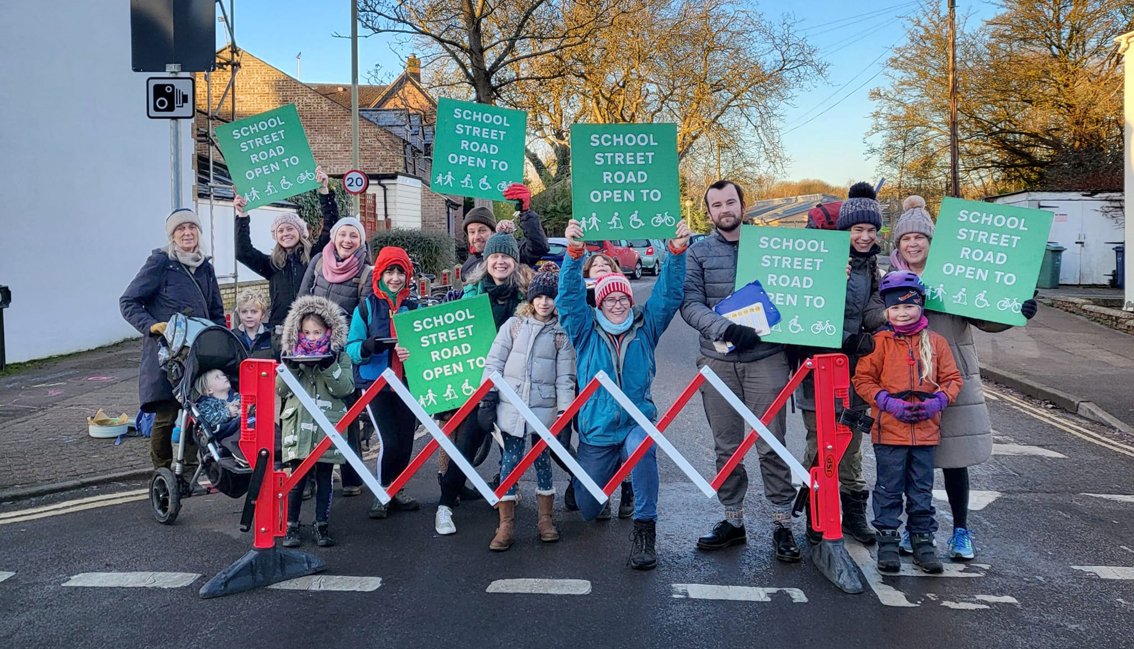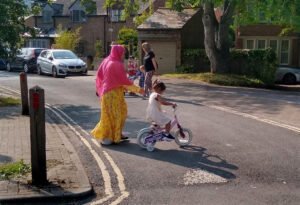School Streets: the key to a cycling city

By Brad Baines
Brad is Labour & Co-operative Councillor for Isis Division, Oxfordshire County Council
This Cycle To School Week (25 to 29 September) it’s time for bolder action to make it safe for kids cycling to school across Oxfordshire. That means more School Streets.
There are many clichés about the role of children in social change, and the importance of the next generation. In terms of active travel, as in so many other matters, this is absolutely true.
By supporting more children (and parents) to change how they get to and from school, we can shift the transport patterns of an entire generation. We will be setting up the next generation to lead fairer, healthier and more sustainable lives.
Making it normal to cycle
During term time, the journey to and from school (the UK average is just over 2 miles) is the most regular trip children make. It comes to define what is normal for a short journey for children and parents alike.
Although getting to school is a perfect opportunity for physical exercise to help prepare for the day ahead, over a third of these trips on average are by car. Not only does this clog up Oxford’s roads twice a day, it is also a key reason why 79% of children in Oxfordshire do not get the recommended minimum of 60 minutes exercise a day.
Changing these negative trends is not as simple as saying ‘get on your bike’.
We need local leadership – delivering the infrastructure and support to make cycling to school the natural first choice.
That’s where School Streets come in.
What are School Streets?

School Streets is a scheme to restrict non-resident motor traffic outside schools at the beginning and end of the school day. It provides safe zones for children walking and cycling to school and a nudge for parents to leave the car at home. School Streets are often matched by support for children and parents to make this change in travel habits.
I’ve seen their effects first hand in Grandpont, in the electoral division I represent. St Ebbes CofE Primary School on White House Road was selected for the County Council’s first phase of School Streets in 2021.
What was the effect at St Ebbes School?
The change following the bedding in of the scheme was dramatic:
- a 67% reduction in traffic past the restriction point
- a 45% reduction in traffic on the section of White House Road approaching this point
This meant not only less traffic to negotiate, but also that families had changed how they got to school.
The enthusiasm from the children cycling and walking past was infectious. What had previously been a stressful journey for many had become something to be enjoyed together.
We need more School Streets
We need to replicate this South Oxford success story at other schools.
We have just four School Streets in Oxfordshire from the first phase: three in Oxford and one in Abingdon. This compares to Hackney’s 49, Calderdale’s 18 and Lambeth’s 24 (with 32 new schemes just announced).
For a county committed to eliminating a billion car journeys a year by 2030, changing how children and parents to get to/from school is essential.
Cycling relies on a network effect. By getting more people cycling, cycling becomes safer for everyone, with better awareness of cycle safety and improved investment in infrastructure.
The County Council needs to embrace the success of Phase One and push forward with a School Street for every appropriate school in Oxford. This will open up the opportunity for thousands of parents and children to feel confident in cycling and walking to school for the first time.
If 58% of kids can cycle to Cherwell School, why not every Oxford school?
Image credits
Main photo: Naomi Waite
Other photo: Jamie Clarke
